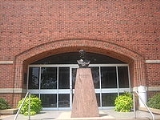
and White Fang
, both set in the Klondike Gold Rush
, as well as the short stories "To Build a Fire
", "An Odyssey of the North", and "Love of Life".
I do not live for what the world thinks of me, but for what I think of myself.![]()
Life? Bah! It has no value. Of cheap things it is the cheapest.![]()
I love the flesh. I'm a pagan. “Who are they who speak evil of the clay? The very stars are made of clay like mine!”![]()
Life achieves its summit when it does to the uttermost that which it was equipped to do.![]()
The trouble with him was that he was without imagination. He was quick and alert in the things of life, but only in the things, and not in the significances.![]()
Life is not always a matter of holding good cards, but sometimes, playing a poor hand well.![]()
Too much is written by the men who can't write about the men who do write.![]()

